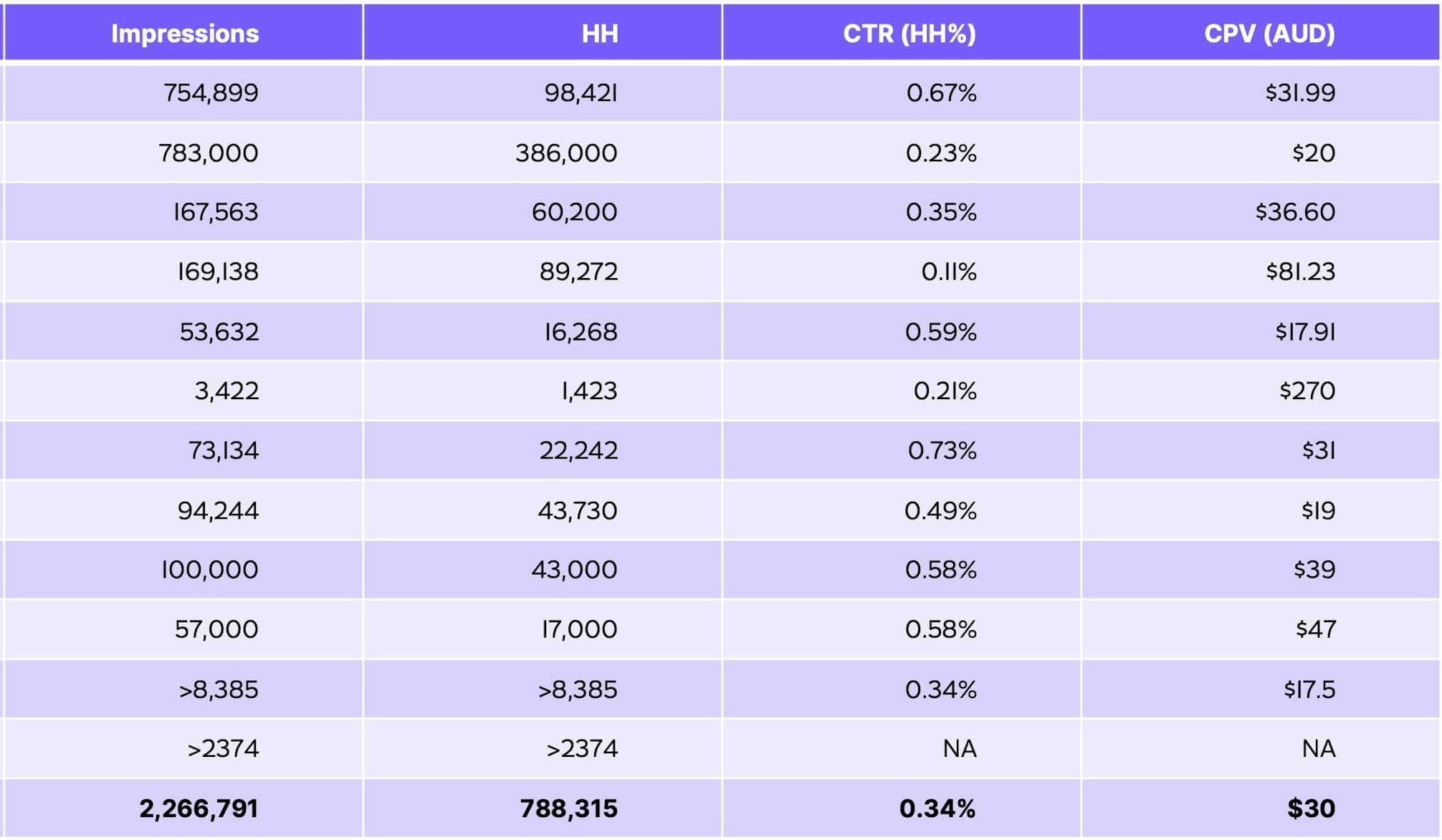
Tracking & Measurement in Podcast Advertising
Last updated 17.07.24
Fortunately tracking capabilities have come a long way since I first started working in the world of podcasting and it means we can now measure success a lot more accurately.
Download figures and listening intent are as accurate as they’ve ever been, and you can now track whether someone acted on hearing your podcast ad without the use of a vanity URL or promo code. Below I’ll explain the different options and how it works.
Pixel-based tracking
There are now several companies that offer pixel-based audio tracking. Veritonic, Podscribe and Spotify Ad Analytics (formerly Podsights) are three leaders in the space and the main difference between them is the UX.
For each ad campaign you create a ‘pixel’ that has a unique code. This is placed on both the podcast the ad is being played on and the website you want people to visit. You can even place pixels at different stages of the customer journey, from landing page through to purchase.
When the ad has been delivered the hosting platform will fire their tracking URL.
At the end of the campaign you can track exactly how many visits / purchases have come from a specific podcast, allowing you to work out a ‘Cost Per Visit’ metric per podcast.

The same is true if you’re promoting a podcast. You can create a pixel through Chartable and pass this on to the advertiser, who can then set it up so you know which podcasts in your campaign are driving the most traffic, again allowing you to make an informed decision on where to re-invest in the future. It's best to create a pixel for each individual podcast in your campaign as they are still having teething problems with impressions being allocated to 'unknown'. If you create pixels for each podcast then you'll avoid this.

But how does it work exactly?
Traffic Attribution by IP Address
The good news is that there is no need to use cookies to track the traffic driven by podcast advertising. It’s all done through IP Address, i.e. the location the podcast ad is listened to.
In short, I listen to a podcast at home and I hear an ad for new Ray-Ban sunglasses. The pixel captures my IP Address. I’m going on holiday at the weekend and could really use a pair so I immediately go to the Ray-Ban website to look at the options. The pixel on the website captures the same IP Address and the visit is attributed to the podcast ad.
Even if I hear the podcast ad on my phone and then use my laptop to visit the website, the attribution is still made because my laptop and phone will have the same IP Address. It also doesn’t have to be instantaneous, and if the website visit comes days after the ad has been heard, it will still be tracked.
However tracking by IP Address does have it’s limitations.
For example, I only ever listen to podcasts on the commute to work and press play after I’ve sat down on the train. I hear an ad for EasyJet and their special offers on flights to Ibiza. There’s no signal on the train so I wait until I get to the office to browse the best dates to get away.
Even though the reason for my website visit is a direct result of the ad I heard on the podcast, the attribution won’t be made as the website visit came from a different location to where the podcast was downloaded.
There are also cases where there are many devices using one IP Address, for example a large office building, and the tracking platforms mentioned above will actually filter these out to ensure the numbers aren’t over-reported, but it also means that legitimate matches may also get missed.
Location & Footfall Tracking with MAIDs
You can also track footfall from people that have heard your ads through IP Address and Mobile Ad IDs using third party data providers.
For example if you create an ad for KFC, like our sister agency Eardrum, the IP Address / MAID is picked up and attribution is made when that same IP Address / MAID enters one of the many stores across the country.
Again there are more technical explanations for how this works, where location polyglons are set up and there are certain requirements / standards for an attribution to be made, but this is as far as I'll go here.
Summary & Recommendations
This is a short non-technical explanation of tracking in podcast advertising but hopefully it has demonstrated the capabilities that exist for marketers that are new to the medium. If you want to learn in more detail this webinar from Podscribe is what you need.
The good thing is that when you get your report at the end of the campaign it is more likely to be under-reported, and the number of visits will likely be higher due to those that have been missed.
It may be the podcast ad that does the convincing on the way to work, but the Instagram ad gets the credit as you scroll on your lunch break…
The most efficient way to track is to know exactly which podcasts your ads are being played out on, and ensuring they’re set up so that you can track not just impressions and listeners, but how many of those listeners are going where you want them to.
